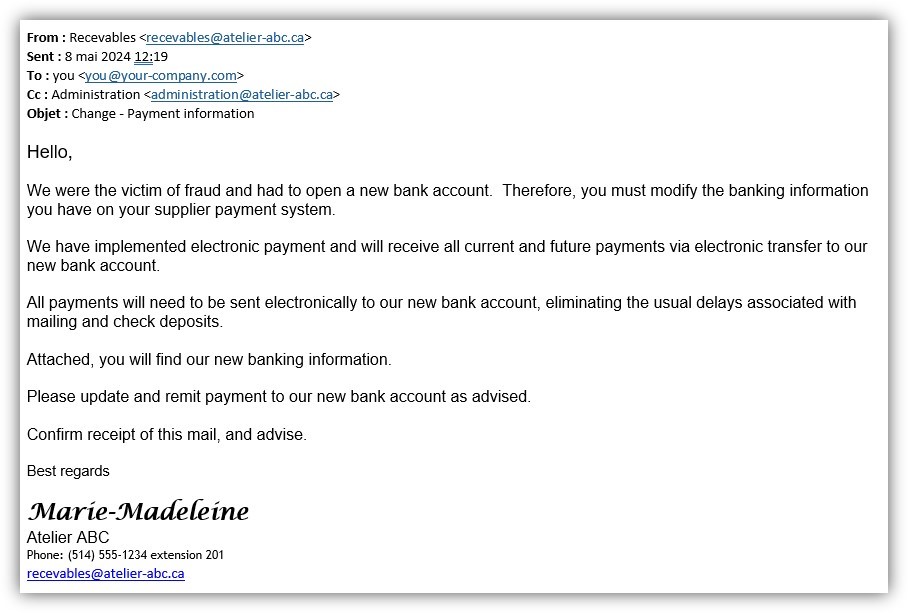How can fraudsters deceive you?
Fraudsters often use a tactic which consists in pretending to be a legitimate supplier to encourage you to direct your payments to a bank account under their control. They generally communicate by email and use an address similar to that of your actual supplier.
Here is an example of this tactic:
- Let’s say that your supplier’s official website is www.atelier-abc.com and the email address for accounts receivable is [email protected].
- The fraudster creates a domain called “atelier-abc.ca” and the email addresses [email protected] and [email protected].
- By pretending to be your supplier, the fraudster then contacts you using this false address. The fraudster can also imitate your supplier’s signature and add the [email protected] address in certified copy to make it seem more credible.
- The fraudster then asks you to modify their banking information before you can send them future payments.

In this example, the telephone number is fake, since the fraudster is counting on the fact that you will only communicate by email, which is often the case. The subtle difference in the email addresses (“.ca” rather than “.com”) can easily go unnoticed.